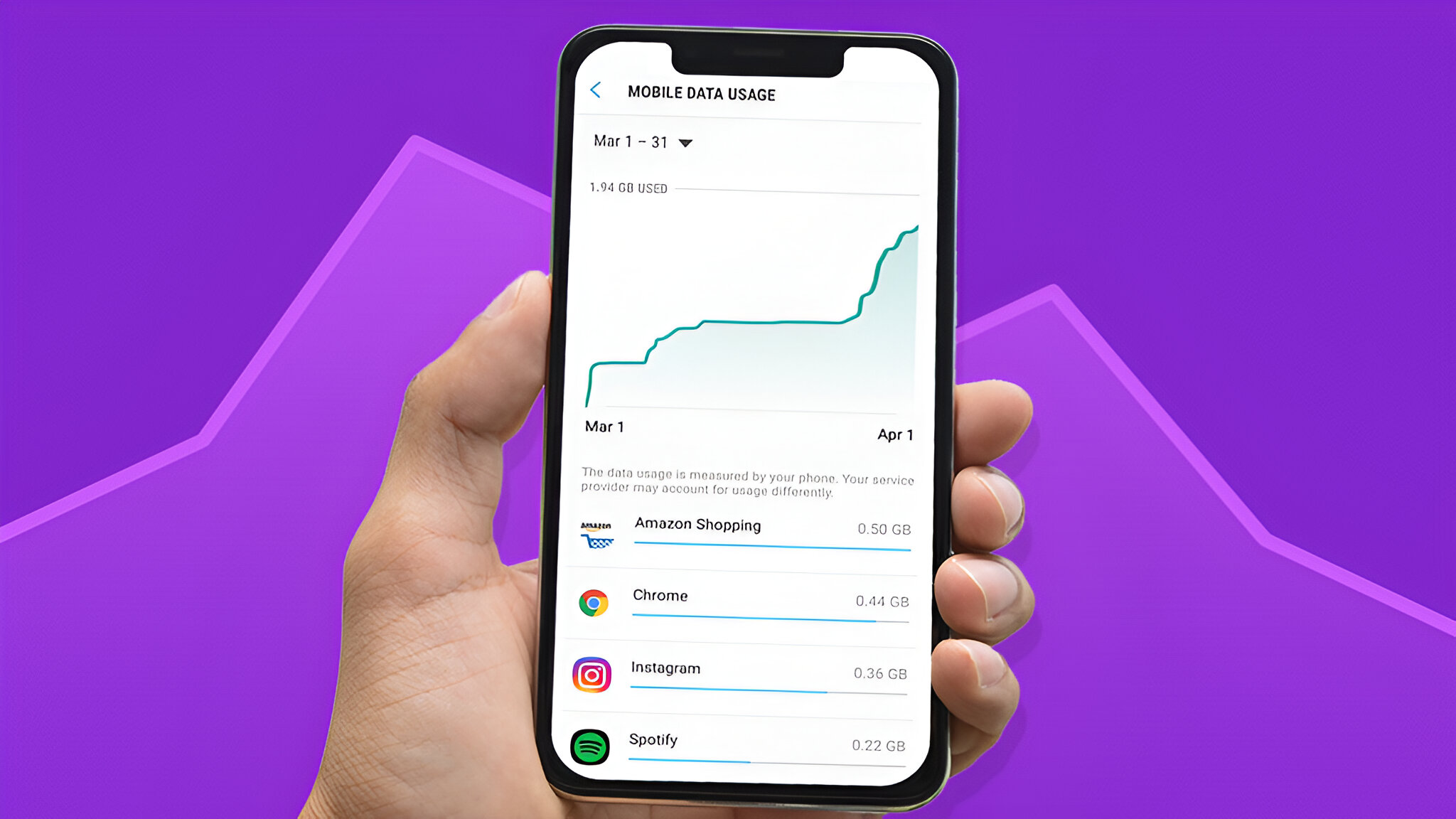Importance of Monitoring Hotspot Connections
In today's fast-paced digital world, the reliance on public Wi-Fi hotspots has become a ubiquitous aspect of modern life. Whether it's at a bustling coffee shop, a bustling airport terminal, or a bustling hotel lobby, the convenience of connecting to a public Wi-Fi network is undeniable. However, the ease of accessibility that these hotspots provide also comes with inherent security risks. This is where the importance of monitoring hotspot connections comes into play.
-
Protecting Sensitive Data: When individuals connect to public Wi-Fi networks, they often transmit sensitive information, such as login credentials, financial details, and personal data. Without proper monitoring, this data is vulnerable to interception by malicious actors who exploit unsecured connections. By monitoring hotspot connections, businesses and individuals can safeguard their sensitive data from potential breaches and cyber threats.
-
Preventing Unauthorized Access: Public Wi-Fi networks are prime targets for cybercriminals seeking to gain unauthorized access to devices and networks. Without proper monitoring, it becomes challenging to detect and prevent unauthorized access attempts. By implementing a robust monitoring system, organizations and individuals can proactively identify and thwart unauthorized access, thereby fortifying their network security.
-
Mitigating Cyber Attacks: Cyber attacks, such as man-in-the-middle attacks and packet sniffing, pose significant threats to individuals and organizations utilizing public Wi-Fi hotspots. Monitoring hotspot connections enables the early detection of suspicious activities and anomalous behavior, allowing for swift intervention to mitigate potential cyber threats before they escalate.
-
Compliance Requirements: For businesses operating in regulated industries, monitoring hotspot connections is imperative for compliance with data protection and privacy regulations. By monitoring and logging hotspot activities, organizations can demonstrate adherence to regulatory requirements and ensure that sensitive data is handled in accordance with industry standards.
-
Maintaining Network Performance: Efficient monitoring of hotspot connections facilitates the identification of bandwidth-intensive applications and devices. By gaining insights into bandwidth usage patterns, businesses can optimize network performance, allocate resources effectively, and enhance the overall user experience.
In essence, the importance of monitoring hotspot connections cannot be overstated in today's interconnected digital landscape. By prioritizing the implementation of robust monitoring systems, businesses and individuals can fortify their network security, protect sensitive data, and mitigate the inherent risks associated with public Wi-Fi usage.
Setting Up a Monitoring System
Setting up a comprehensive monitoring system for hotspot connections is a pivotal step in fortifying network security and safeguarding sensitive data. By implementing an effective monitoring system, organizations and individuals can proactively detect and respond to potential security threats, unauthorized access attempts, and anomalous activities within public Wi-Fi networks.
Network Monitoring Tools
To initiate the setup process, it is essential to identify and deploy robust network monitoring tools designed to capture and analyze hotspot traffic. These tools, ranging from dedicated hardware appliances to software-based solutions, enable real-time monitoring of network activities, including data transmission, device connections, and bandwidth utilization. Additionally, advanced monitoring tools offer features such as intrusion detection, packet inspection, and traffic analysis, empowering administrators to gain comprehensive visibility into hotspot connections.
Configuration and Deployment
Upon selecting the appropriate network monitoring tools, the next step involves configuring and deploying these solutions within the network infrastructure. This entails defining monitoring parameters, specifying data capture settings, and integrating the monitoring tools seamlessly into the existing network architecture. Furthermore, administrators must ensure that the monitoring system operates in tandem with network devices and access points, allowing for comprehensive coverage of hotspot activities across the entire network environment.
Establishing Monitoring Policies
In conjunction with the technical setup, it is imperative to establish clear monitoring policies and protocols that govern the operation of the monitoring system. These policies delineate the scope of monitoring activities, define permissible uses of captured data, and outline procedures for incident response and threat mitigation. By establishing transparent monitoring policies, organizations can ensure compliance with privacy regulations, uphold ethical data handling practices, and foster a culture of responsible network monitoring.
Training and Awareness
An often overlooked aspect of setting up a monitoring system is the provision of comprehensive training and awareness programs for network administrators and personnel responsible for overseeing hotspot connections. Training initiatives should encompass the operation of monitoring tools, interpretation of monitoring data, and proactive response to security incidents. Additionally, raising awareness about the importance of monitoring hotspot connections fosters a heightened sense of vigilance and accountability among network stakeholders, thereby enhancing the overall efficacy of the monitoring system.
Continuous Evaluation and Optimization
Setting up a monitoring system is not a one-time endeavor but rather an ongoing process that demands continuous evaluation and optimization. Administrators should regularly assess the performance of monitoring tools, review captured data for actionable insights, and fine-tune monitoring parameters to align with evolving security requirements. By embracing a proactive approach to system evaluation and optimization, organizations can adapt to emerging security threats and ensure the sustained effectiveness of their monitoring infrastructure.
In essence, setting up a monitoring system for hotspot connections necessitates a holistic approach encompassing the deployment of robust monitoring tools, establishment of clear policies, provision of comprehensive training, and a commitment to continuous improvement. By adhering to these principles, organizations and individuals can fortify their network security posture and proactively mitigate the risks associated with public Wi-Fi usage.
Identifying Suspicious Activity
Identifying suspicious activity within hotspot connections is a critical aspect of maintaining network security and thwarting potential cyber threats. By vigilantly monitoring hotspot activities, organizations and individuals can proactively detect anomalous behavior, unauthorized access attempts, and malicious activities that may compromise the integrity of the network. Here are key strategies for identifying suspicious activity within hotspot connections:
Real-time Traffic Analysis
Implementing real-time traffic analysis enables the continuous monitoring of data packets traversing the network. By scrutinizing network traffic patterns, administrators can swiftly identify irregularities, such as unexpected data flows, unusual port usage, or excessive data volume originating from specific devices. Additionally, real-time traffic analysis facilitates the detection of unauthorized access attempts and potential indicators of compromise, allowing for immediate intervention to mitigate security risks.
Anomaly Detection
Utilizing anomaly detection mechanisms empowers administrators to identify deviations from established baseline network behavior. By establishing normal traffic patterns and behavior profiles, anomaly detection algorithms can flag unusual activities, such as sudden spikes in data transfer rates, atypical device connections, or aberrant protocol usage. This proactive approach to anomaly detection enables the early identification of suspicious activity, providing an opportunity for preemptive security measures.
Intrusion Detection Systems (IDS)
Deploying intrusion detection systems within the network architecture enhances the capability to identify suspicious activity and potential security breaches. IDS solutions actively monitor network traffic for signs of unauthorized access, malicious payloads, and known attack signatures. Upon detecting anomalous behavior, IDS solutions generate alerts, enabling administrators to investigate and respond to potential security incidents promptly.
Behavior Monitoring
Employing behavior monitoring techniques entails analyzing user and device behavior within the network environment. By scrutinizing user activities, device interactions, and application usage, administrators can pinpoint deviations from typical behavior that may indicate unauthorized access or malicious intent. Behavior monitoring serves as a valuable tool for identifying suspicious activities that evade traditional security measures, thereby bolstering the overall security posture.
Threat Intelligence Integration
Integrating threat intelligence feeds into the monitoring infrastructure enriches the capability to identify suspicious activity by leveraging up-to-date information on emerging threats and attack vectors. By correlating network activities with threat intelligence data, administrators can proactively identify connections to known malicious entities, malicious domains, or command-and-control servers, thereby preempting potential security breaches.
In essence, the effective identification of suspicious activity within hotspot connections demands a multi-faceted approach encompassing real-time traffic analysis, anomaly detection, intrusion detection systems, behavior monitoring, and threat intelligence integration. By leveraging these strategies, organizations and individuals can bolster their proactive security posture and fortify their defenses against evolving cyber threats.
Managing Bandwidth Usage
Managing bandwidth usage within hotspot connections is a pivotal aspect of optimizing network performance, enhancing user experience, and mitigating potential network congestion. By implementing effective bandwidth management strategies, organizations and individuals can allocate network resources efficiently, prioritize critical applications, and ensure equitable distribution of bandwidth across connected devices.
Traffic Prioritization
Prioritizing network traffic based on application requirements and criticality is instrumental in managing bandwidth usage. By implementing Quality of Service (QoS) policies, administrators can allocate bandwidth resources according to predefined criteria, ensuring that essential applications, such as VoIP services and video conferencing, receive sufficient bandwidth to maintain optimal performance. Additionally, QoS mechanisms enable the prioritization of real-time traffic over non-critical data streams, thereby enhancing the overall responsiveness of the network.
Bandwidth Throttling
Employing bandwidth throttling mechanisms empowers administrators to cap the maximum data transfer rates for specific applications or device categories. By imposing bandwidth limits on non-essential or bandwidth-intensive applications, such as file downloads or media streaming, organizations can mitigate the impact of excessive data consumption on overall network performance. Bandwidth throttling serves as an effective means of regulating bandwidth usage and preventing individual devices from monopolizing network resources.
Usage Monitoring and Reporting
Implementing robust usage monitoring and reporting tools enables administrators to gain comprehensive insights into bandwidth utilization patterns and data consumption trends. By analyzing usage reports, administrators can identify bandwidth-intensive applications, peak usage periods, and devices exhibiting excessive data consumption. This visibility into usage patterns facilitates informed decision-making regarding bandwidth allocation, capacity planning, and the identification of potential network bottlenecks.
Bandwidth Reservation
Utilizing bandwidth reservation mechanisms allows for the allocation of dedicated bandwidth resources to specific applications or services. By reserving bandwidth for mission-critical applications or latency-sensitive services, organizations can ensure consistent performance and mitigate the impact of network congestion during periods of high demand. Bandwidth reservation strategies contribute to maintaining service level agreements (SLAs) and upholding the quality of experience for end-users.
Policy-based Bandwidth Allocation
Establishing policy-based bandwidth allocation rules enables administrators to define granular policies governing the distribution of bandwidth across user groups or device categories. By enforcing bandwidth allocation policies based on user roles, departmental requirements, or application priorities, organizations can align bandwidth distribution with business objectives and operational needs. Policy-based bandwidth allocation fosters equitable resource distribution and supports tailored network access controls.
In essence, managing bandwidth usage within hotspot connections necessitates the adoption of proactive strategies such as traffic prioritization, bandwidth throttling, usage monitoring and reporting, bandwidth reservation, and policy-based bandwidth allocation. By leveraging these approaches, organizations and individuals can optimize network performance, mitigate congestion, and ensure equitable access to network resources.
Ensuring Security and Privacy
Ensuring robust security and privacy within hotspot connections is paramount in safeguarding sensitive data, mitigating cyber threats, and upholding regulatory compliance. By implementing comprehensive security measures and privacy-enhancing practices, organizations and individuals can fortify their network defenses and instill confidence in the integrity of their wireless communications.
Encryption Protocols
Employing strong encryption protocols, such as WPA2 (Wi-Fi Protected Access 2) or the more recent WPA3, is fundamental in securing hotspot connections. Encryption mechanisms serve to obfuscate transmitted data, rendering it indecipherable to unauthorized entities. By enforcing the use of encryption, organizations can mitigate the risk of eavesdropping and unauthorized data interception, thereby bolstering the confidentiality of transmitted information.
Secure Authentication Mechanisms
Implementing secure authentication mechanisms, such as WPA2-Enterprise with 802.1X authentication, enhances the integrity of hotspot connections by requiring user credentials for network access. By mandating robust authentication processes, organizations can mitigate the risk of unauthorized access and unauthorized device connections, thereby fortifying network security and preventing unauthorized data access.
Virtual Private Network (VPN) Usage
Encouraging the use of Virtual Private Networks (VPNs) for hotspot connections augments security and privacy by creating encrypted tunnels for data transmission. VPNs effectively shield transmitted data from interception and tampering, thereby safeguarding sensitive information from potential cyber threats. By promoting VPN usage, organizations can empower users to establish secure and private connections, irrespective of the underlying network security measures.
Intrusion Prevention Systems (IPS)
Deploying Intrusion Prevention Systems within the network infrastructure enables real-time detection and prevention of potential security breaches and malicious activities. IPS solutions actively monitor network traffic for signs of suspicious behavior and known attack patterns, allowing for immediate intervention to mitigate security risks. By integrating IPS capabilities, organizations can fortify their defenses against evolving cyber threats and unauthorized access attempts.
Privacy-aware Data Handling
Upholding privacy-aware data handling practices is essential in mitigating the risk of unauthorized data exposure within hotspot connections. Organizations must adhere to data minimization principles, ensuring that only necessary information is transmitted over public Wi-Fi networks. Additionally, the implementation of data anonymization and encryption for sensitive data further fortifies privacy protections and reduces the risk of data compromise.
In essence, ensuring security and privacy within hotspot connections demands a multi-faceted approach encompassing encryption protocols, secure authentication mechanisms, VPN usage, intrusion prevention systems, and privacy-aware data handling. By integrating these measures into their network security posture, organizations and individuals can fortify their defenses against cyber threats and uphold the privacy of their wireless communications.

























